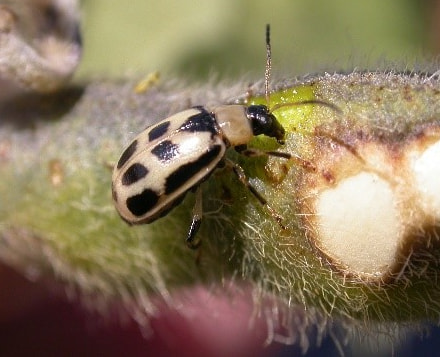 Image 1: Bean leaf beetle damage to soybean pods.
Image 1: Bean leaf beetle damage to soybean pods.
- A few insects can cause damage to soybean pods and pose a threat to yields and seed quality.
- Bean leaf beetles (BLB), grasshoppers and stink bugs are some of the most common pests of soybean pods.
- Several species of stink bugs can be pests of crops, but the green stink bug is usually the most prevalent species in soybean fields.
A few insects can feed and cause damage to soybean pods and pose a threat to yields and seed quality. The most common pod feeders include bean leaf beetles (BLB), grasshoppers and stink bugs. Bean leaf beetles are present in soybeans from emergence to harvest. They are small beetles (1/4” long) that vary in color from yellow to tan to orange to red, with markings that may include two black spots on each wing cover and black bands around the outer edges. Some BLB’s have wing covers with no markings. Regardless of markings present or not, the common distinctive visual identifier is always a black triangle behind the thorax. The second summer generation of BLB’s can cause damage to soybean pods, by scraping off their green tissue (Image 1) and leaving scars that may facilitate pathogen infection.
Several species of grasshoppers can be found feeding on soybeans around July and August. Their numbers are usually high in soybeans during dry seasons where other food hosts are scarce, and their natural controls are suppressed. Both adults and nymphs can damage soybeans by feeding on leaves and pods. Grasshoppers usually move to soybean fields from the neighboring pastures, hay or small grains and numbers may be heavier on field edges as they move across the field. Grasshoppers have strong mandibles and can remove big chunks of the pod tissue (Image 2). Stink bugs are another important pod pest of soybeans. Stink bugs are shield-shaped insects and may emit an offensive odor if handled. There are several species of stink bugs that can be present in fields, but the green stink bug is most commonly found feeding on soybeans. Both, adults and nymphs (Image 3), have piercing-sucking mouthparts and while feeding, they inject a toxin to liquefy the plant tissue. Feeding on pods can result in shriveled, small, discolored soybeans. The germination of soybean seeds may also be affected.

Image 2. Grasshopper damage to soybean pods.

Image 3. Stink bug nymphs on soybean pods
Estimating the percent of damaged pods per field can be used as a management guideline. Usually 10-15% incidence of pod damage through the R6 stage may justify an insecticide spray. Additionally, stink bugs and BLB’s can also be sampled using sweep nets and in this case, thresholds are determined based on the number of insects found per sweep. Several straight goods or premixes of pyrethroids, OP’s and neonicotinoids are available and effective against these pests. However, be aware of the pre-harvest interval when making insecticide application decisions.